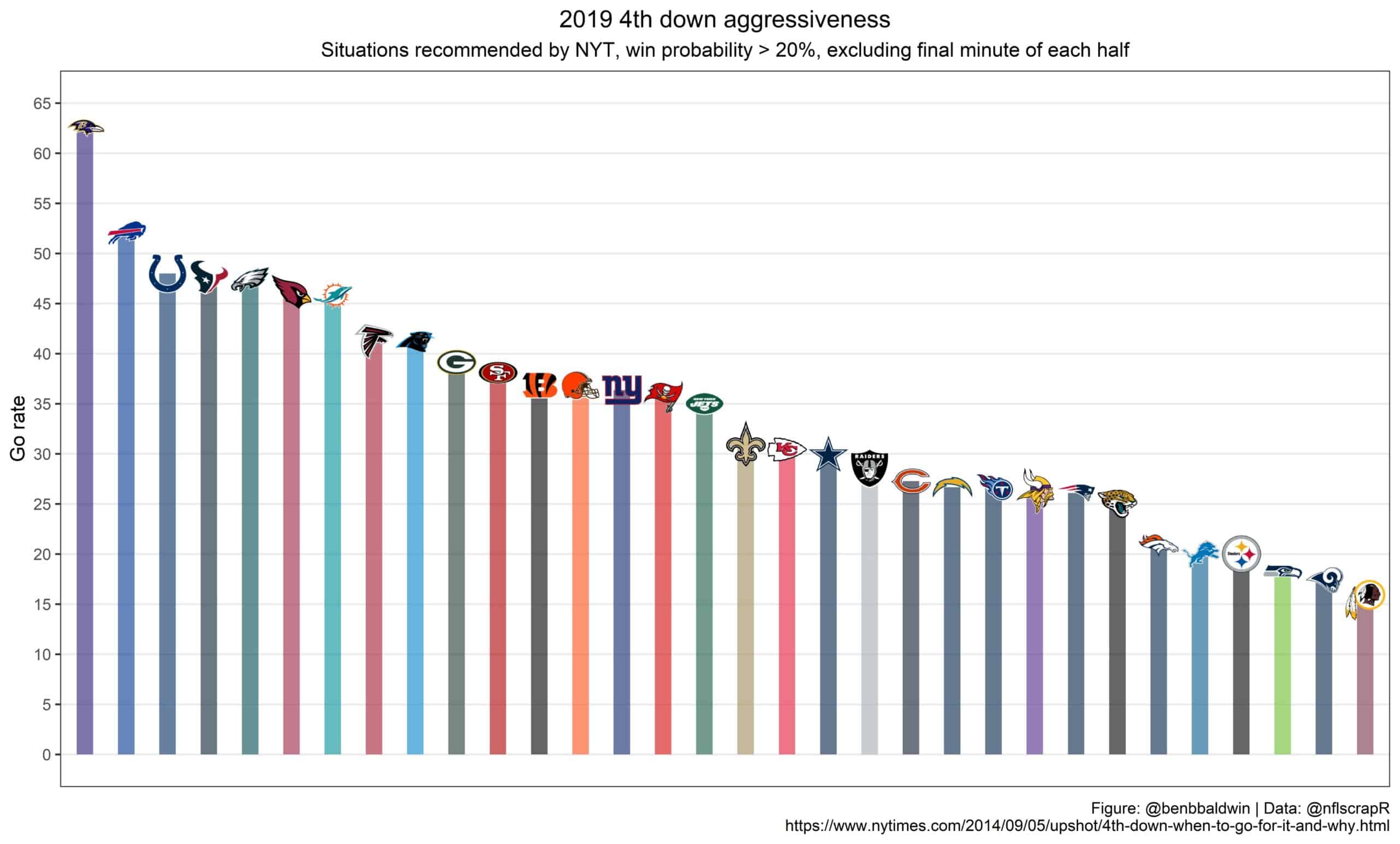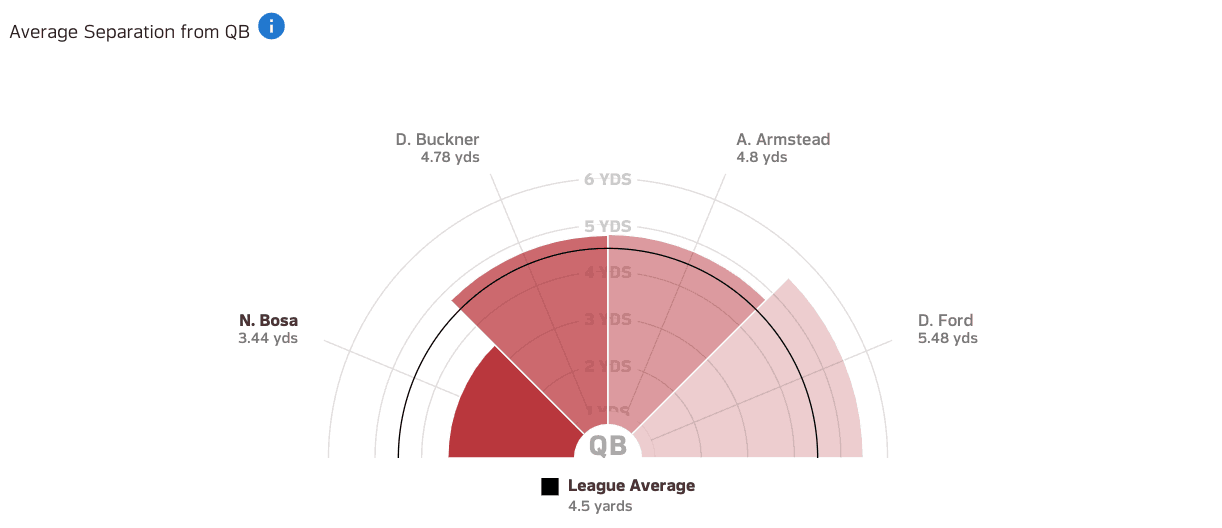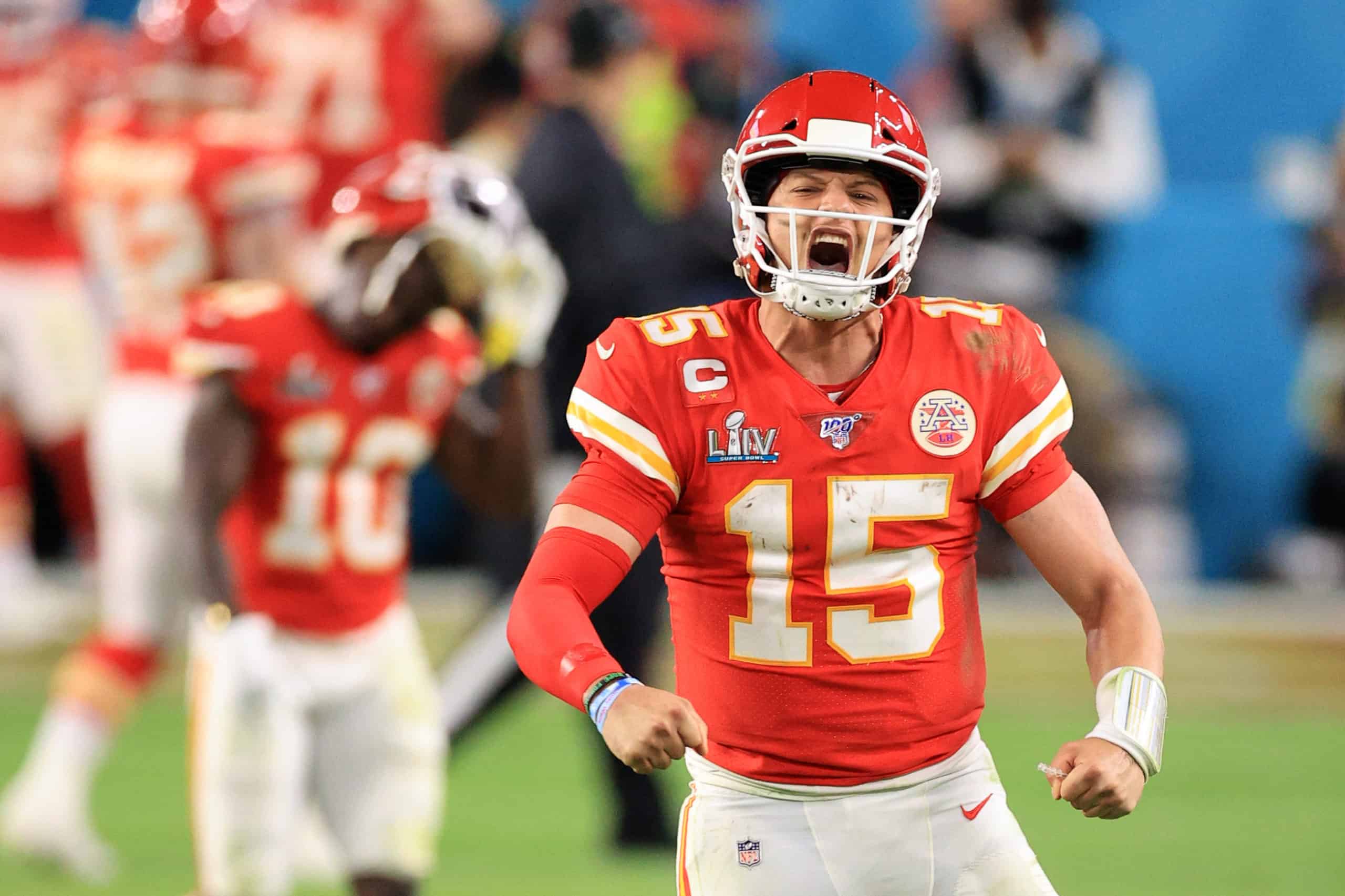With 7:17 remaining in the fourth quarter, the Kansas City Chiefs had a 3.9% chance of winning Super Bowl LIV, per ESPN Stats and Info. Barely four minutes of game time later, the Chiefs moved over 50% and when the clock expired as Patrick Mahomes threw a wild pass up into the air, Kansas City had a 31-20 win over the San Francisco 49ers.
The Chiefs erased a 10-point deficit in the second half, a comeback that looks tame compared to what they did in the previous two rounds of the playoffs against the Houston Texans and Tennessee Titans. Through three quarters, it looked like Mahomes was going to have his worst game as a pro, but he ended the night on the stage hoisting the Lombardi Trophy and named Super Bowl MVP.
For this to happen, a number of things had to break right for the Chiefs (and wrong for the 49ers).
Bizarro Andy Reid Game
Andy Reid got his second chance at a Super Bowl win and he coached it in almost the exact opposite way you would expect. Reid was aggressive early on fourth downs, likely knowing kicking field goals would not be enough to keep up in this game.
During the regular season, Reid was a good game manager and typically kept the Chiefs away from backbreaking mistakes — he came out second behind John Harbaugh in EdjSports’ Head Coach Rankings, but he was nowhere near the most aggressive on fourth downs. Kansas City was just 18th in going for fourth down on attempts recommended to go for it by the New York Times Fourth Down Bot.

But on Kansas City’s second drive of the game, the Chiefs faced a 4th and 1 from the San Francisco 5-yard line. Before the play, the broadcast had gone to commercial and Reid had sent the field goal unit out, but by the time the commercial break ended, Reid had changed his mind and put the offense back on the field.
Per EdjSports, the decision to go for it increased the Chiefs’ pre-snap win probability by 4%. Kansas City picked up the first down on a direct snap to Damien Williams, on a play offensive coordinator Eric Bienemy later said was inspired by the 1948 Rose Bowl. The Chiefs score a touchdown a play later.
Going through these grainy 1948 Rose Bowl highlights, this might actually be the play the Chiefs stole. More of an inside running path here. Anyway, Fritz Crisler Michigan was very cool pic.twitter.com/tzs2VSXMBz
— Alex Kirshner (@alex_kirshner) February 3, 2020
On the next drive, the Chiefs faced a 4th and 1 from the San Francisco 19-yard line. Kansas City ran an option and as Nick Bosa closed in on Mahomes, the quarterback was able to pitch to Williams, who had a clear lane to the right for the first down. The Chiefs eventually settled for a field goal, but it was another aggressive decision that kept the ball in Kansas City’s possession with the intent of scoring a touchdown.
While the fourth down decisions were aggressive, the offense was more conservative overall in the first half. In an attempt to limit the impact of San Francisco’s pass rush, the Chiefs got the ball out quickly, limited deep shots, and had a number of early-down runs. The game script in the second half forced the Chiefs back into their pass-heavy ways (they ended with a 67.8% pass rate on early downs for the game — though it was a 13/12 split on first down) but inefficient runs on first and second down, added in with a short passing game, made third downs much harder to convert.
Patrick Mahomes & A tale of two halves
The offensive game plan in the first half was questionable, but so was Mahomes’s performance even when he was able to drop back and have the opportunity for some open throws. Mahomes had some bad misses in the first half without the big plays to make up for them.
In the first half, Mahomes had just 104 passing yards and his average pass traveled only 3.9 yards beyond the line of scrimmage. He had just two of 18 attempts travel over 10 yards beyond the line of scrimmage and only one of those was completed.
This was all compounded with an emphasis on getting the ball out quickly to avoid the San Francisco pass rush. In the first half, Mahomes averaged 2.54 seconds to throw. During the regular season, Mahomes averaged 2.84 as much of the Kansas City offense was built around buying time for deep shots. That wasn’t the case in the first half but, perhaps just out of necessity, it changed in the second half. The poor offensive performance in the first half basically forced Mahomes and the Chiefs to play to their strengths in the second half. It worked.
In the second half, the Chiefs were able to hold the ball longer and push the ball down the field. Mahomes finished the game 3-of-5 for 110 yards and an interception on passes more than 20 yards past the line of scrimmage.
Part of what enabled this was a schematic shift to keep more players in to block — or at least chip before they went out on routes. Early in the first half, the plan to get the ball out quickly was helping slow down the pass rush. Kansas City had the advantage early in the play but in the second half, Nick Bosa got in a rhythm against left tackle Eric Fisher and was consistently in the backfield. Per Next Gen Stats, Bosa finished the average play 3.44 yards away from Mahomes, well below the league average and significantly better than any of his 49ers teammates during the game.

The extra pass blocking help worked when the Chiefs had to go deep. On a 3rd and 15 from the Kansas City 35 with a little over seven minutes left in the game, the Chiefs went four verts from a 3×1 set. The iso receiver was tight end Blake Bell (81), in-line to the right. At the snap, he stayed in to chip on Dee Ford (55) before his route and on the other side, Damien Williams (26) delayed his route to give help with Bosa (97) on the left side. Mahomes had just enough time to find Tyreek Hill deep for a gain of 44 yards.
















